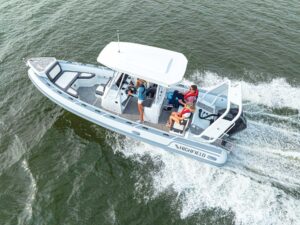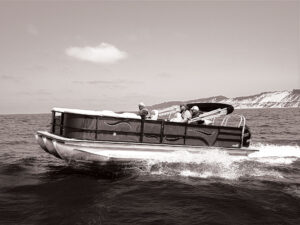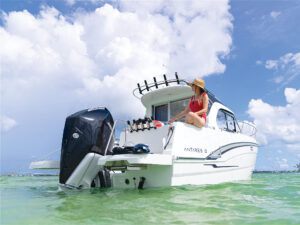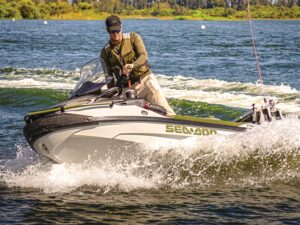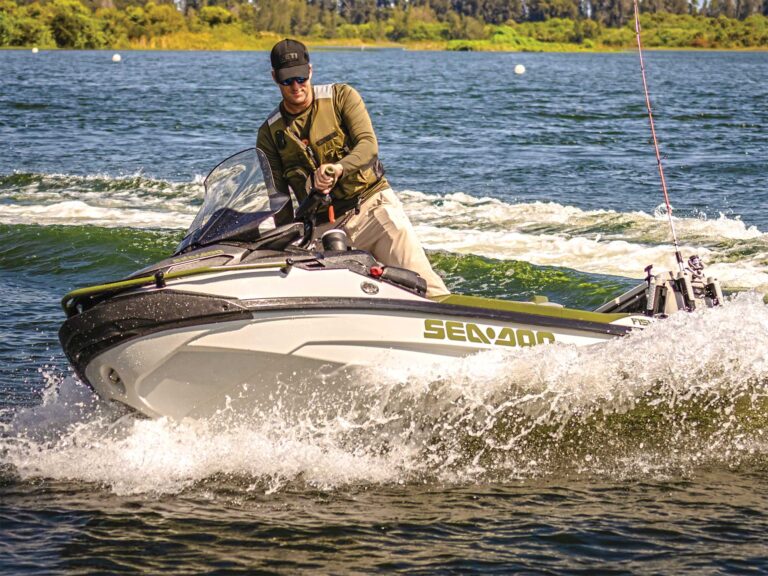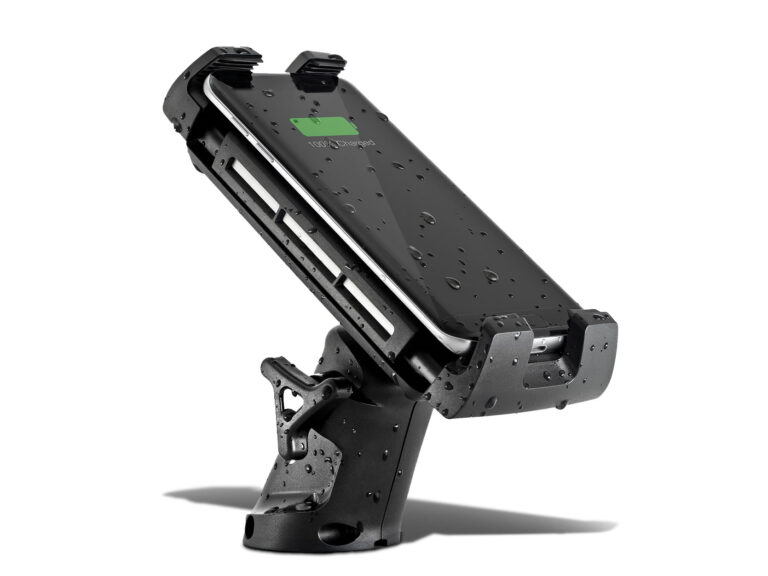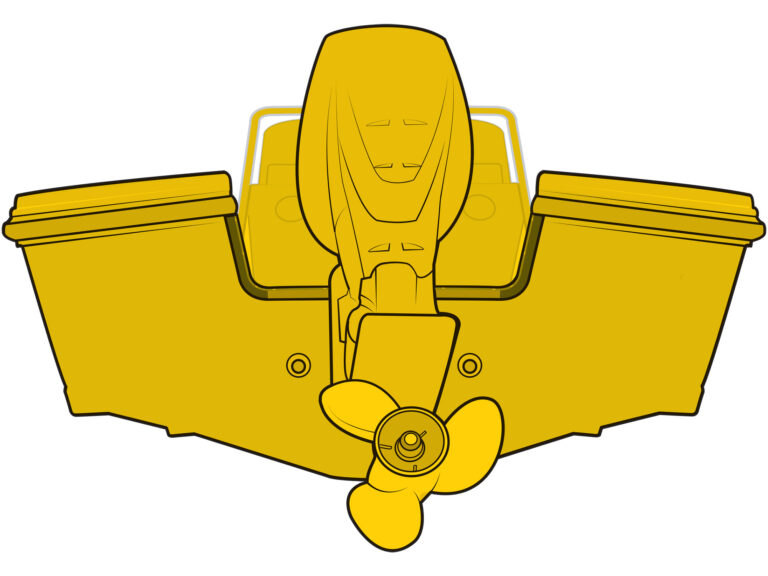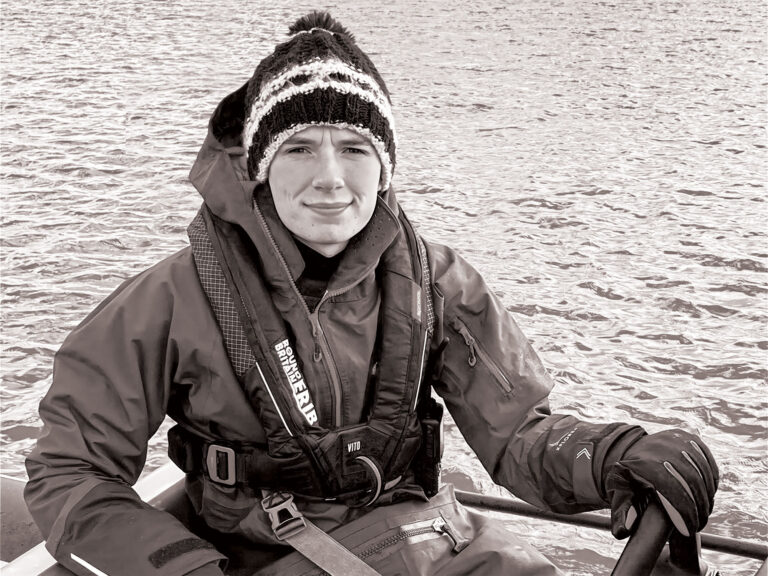After years of building mostly bay boats, Polar has broken tradition with its new 19 Deep Vee. With 2 ½’ of forward freeboard, an interior depth of 2’1″, and a 17-degree deadrise, it should run considerably softer than the Polars bred for the bay. Fortunately, with this boat Polar didn’t change another thing this company is known for-realistic pricing. Even with a fuel-stingy 115-hp four-stroke Yamaha outboard, the Polar comes in under $20,000.
Construction belies the moderate price: This is a wood-free hull that includes a grid-type stringer system. PVC chase tubes protect wires and hoses and make it easy to install after-market electronics. All through-hulls below the waterline are brass, not plastic; rodholders are chrome on brass; and all wiring connections are waterproof. So-where did the company save a few bucks? The only obvious place is inside the stowage boxes and anchor locker, where there’s spray-coat finish rather than smoother, easier-to-clean gel coat.
Handling was typical for a boat of this nature. It leans into sharp turns, gluing you to the seat, and shows no unusual behavior in emergency maneuvers. However, with three aboard, the 115-hp motor seemed a little overmatched; I’d probably opt for a 150-hp outboard.
All the fishing goodies are included, such as six console rodholders, six more in the gunwales (most boatbuilders provide two and charge $50 to $100 for each additional one), a transom livewell, coaming bolsters, and an integrated tacklebox behind the front console seat. The console design is a bit unusual. The unit is mounted on a slightly elevated molding, which creates a toerail all the way around. Standard courtesy lights are hidden under the elevated section, keeping glare out of your eyes. All walking surfaces are covered in molded nonslip, and the molded-in spray deflectors give nice lines to the hullsides. Bottom line? The 19 Deep Vee’s level of construction, standards, and fit-and-finish are a match for many boats that cost more.
High Points: At the list cost, it’s practically a steal with lots of goodies included-four extra rodholders, gunwale bolsters, and a livewell-that much of the competition charges extra for. Fit and finish belies the price.
Low Points: Spray-coat finish in the anchor locker and stowage boxes isn’t as nice or easy to clean as gel coat. Steering system was tough to operate at some trim angles; upgrade to hydraulic. Power at 115-hp is too thin with a full crew aboard.
Toughest Competitor: Sailfish’s 198 CC goes for a hair more than the Polar at $21,810 with the same power. It has a standard livewell but just two rodholders in the gunwales and no coaming bolsters. Fit and finish is comparable, and both boats feature a low-profile bow grabrail.
LOA…………19’1″
Beam…………8’6″
Draft (max.)……1’8″
Displacement (lbs., approx., w/o power)……..3,400
Transom deadrise….17°
Bridge clearance….4’8″
Minimum cockpit depth…..2’1″
Fuel capacity (gal.)…72 Price (w/o power)……..$10,200
Price (w/test power)……..$19,495
Standard power None.
Optional power Single outboard to 150 hp.
Test boat power: Single 115-hp Yamaha four-stroke in-line-4 outboard with 106.2 cid, 3.11″ bore x 3.40″ stroke, swinging a 14 1/4″ x 17″ three-bladed ss prop through a 2.15:1 reduction.
Standard equipment (major items) No-feedback steering; livewell; integrated tacklebox; 6 gunwale-mounted rodholders; 6 vertical console rodholders; coaming pads; raw-water washdown; removable cooler.

